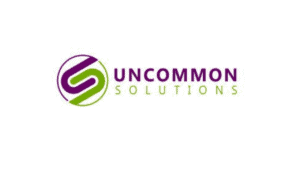Today’s business landscape is characterized by fierce competition and ever-increasing challenges. In such an environment, having a well-trained and highly skilled sales team is crucial for driving a company’s growth and ensuring its success. If you answer “no” to whether you possess such a sales team, it might be time to consider investing in training your sales force.
During periods of success, it’s common for businesses to overlook potential issues in their sales processes or gaps in the capabilities of their sales team. However, recognizing when intervention is needed and acknowledging the necessity of sales training is essential for sales leaders. By addressing these needs promptly, companies can proactively tackle the challenges ahead and position themselves for continued success.
To help you identify when it’s time to invest in sales training for your organization, here are five telltale signs to look out for.
1. Declining Sales Performance
If you’ve been witnessing a consistent decline in your sales performance, it’s crucial to take a step back and reassess the skillset of your sales team. This decline could stem from various factors, each of which requires careful consideration and targeted intervention. By investing in sales training, you can address these issues and equip your team with the necessary resources to overcome challenges and regain momentum.
One potential factor contributing to declining sales performance is outdated sales techniques. In today’s rapidly evolving business landscape, sales strategies that once yielded success may no longer be as effective. By engaging in sales training, your team can learn industry best practices, explore innovative sales methodologies, and discover new approaches to engage customers and close deals. This training will help them adapt to changing buyer behaviors, preferences, and expectations, enabling them to regain their competitive edge.
Another factor impacting your sales performance is not adapting to the company’s evolving customer base. As your business expands and targets new customer segments, your sales team must be equipped with the knowledge and skills to reach and engage these new prospects effectively. Sales training can provide insights into these target markets, help sales reps tailor their approach to resonate with different customer profiles and improve their ability to articulate the unique value proposition of your products or services.
Additionally, declining sales performance may indicate an inability to adapt to changing market conditions. Market dynamics constantly shift, influenced by economic trends, emerging technologies, and evolving customer preferences. Sales training can help your team stay updated on these market changes and equip them with the necessary tools to navigate shifting landscapes. They can learn to identify emerging opportunities, anticipate customer needs, and position their offerings effectively in the market.
Let’s consider an example to illustrate the situation. Imagine that your once top-performing sales representatives are struggling to close deals, and your sales figures are steadily dropping. This decline could be due to a combination of factors: perhaps your team has become complacent and relies on outdated sales techniques, or they may find it challenging to adapt to the needs of new customers you’ve recently targeted. Whatever the cause, investing in sales training can help address these issues head-on.
Pro Tip: Conduct a thorough assessment of your sales team’s skills and identify areas for improvement.
2. Product Demos Not Converting
While product training is undoubtedly crucial for sales teams, providing training on effective communication and engagement with prospects is equally essential. Engaging prospects in productive conversations that focus on understanding their challenges, problems, and pain points, as well as the associated costs, is crucial to successful sales interactions.
Sales leaders who aim for consistent sales success recognize the value of training their teams on a well-defined sales process and philosophy that all members follow. Additionally, they emphasize developing softer skills that equip sales professionals to ask insightful questions and listen actively.
For example, suppose your company finds that after delivering presentations and product demos, there is a struggle to convert those conversations into actual sales. In that case, it may indicate a gap in effective communication and engagement strategies. This is where sales training can play a vital role. By investing in training, sales teams can refine their skills in active listening, asking insightful questions, and leading solution-focused conversations. This empowers them to connect with prospects deeper, understand their pain points, and position their products or services as the ideal solutions. Ultimately, this training helps bridge the gap between presentations and demos and the successful conversion of those interactions into tangible sales outcomes.
Pro Tip: When a prospect shares with you a problem and asks you for help, there is a decision to make. Either educate and tell about products and services, or before educating, you can ask a few questions to seek understanding where you and your prospect learn more about them.
3. High Sales Rep Turnover
A high turnover rate in your sales department can be a significant red flag for any organization. It indicates that underlying issues need to be addressed, and it can be attributed to several factors. These factors include hiring the wrong salespeople, failure to properly onboard and train new hires, ineffective training programs, lack of sales leadership, and an inadequate compensation plan.
When hiring the wrong salespeople, organizations may face challenges in identifying candidates with the necessary skills, experience, and cultural fit for the role. Without a rigorous and strategic hiring process, there is a higher likelihood of bringing in individuals who may not fit the organization or lack essential sales competencies. As a result, these individuals may struggle to meet performance expectations, leading to frustration and turnover.
Another factor contributing to high turnover is the failure to onboard and train new sales hires properly. Effective onboarding ensures new sales team members understand the organization’s values, products or services, sales processes, and customer base. Insufficient or ineffective onboarding can leave new hires unprepared and ill-equipped to succeed in their roles, leading to frustration and decreased job satisfaction.
Ineffective training programs can also contribute to high turnover rates. Sales professionals need ongoing development and training to refine their skills, keep up with industry trends, and adapt to changing market conditions. Salespeople may struggle to perform at their best if training programs are outdated, irrelevant, or lack the necessary support and resources. This can lead to feelings of stagnation, frustration, and, ultimately, a decision to seek opportunities elsewhere.
Additionally, the absence of effective sales leadership can play a role in high turnover rates. Sales leaders are crucial in providing their teams with guidance, support, and motivation. When sales leaders are absent, uninvolved, or lack the necessary skills to lead and inspire, it can create a sense of disengagement and dissatisfaction among sales professionals. Without strong leadership, the sales team may lack direction, leading to a higher likelihood of turnover.
Lastly, an inadequate compensation plan can significantly impact turnover rates. If the compensation structure is not aligned with industry standards, lacks incentives for high performance, or does not reward desired behaviors, it can demotivate sales professionals and create dissatisfaction. Competitive compensation packages that properly incentivize and reward success can help retain top talent and reduce turnover.
Pro Tip: If you see a turnover rate of over 15%, you may be experiencing one or more of these factors and should seek help. Something to think about, on the flip side, no turnover is not necessarily a sign of a healthy sales organization. You may be tolerating mediocrity longer than you should.
4. Inability to Add New Customers
While successfully growing your business is an accomplishment, assessing whether you are adding enough new business to achieve your growth goals is essential. While it’s commendable to focus on nurturing and expanding existing client accounts, it’s equally crucial to have a strong focus on acquiring new customers. If you face challenges in acquiring new business, it may be time to evaluate your sales team’s composition and priorities.
One aspect to consider is whether you have enough “hunters” on your team. Hunters excel at prospecting, identifying new leads, and closing deals with new clients. They possess the skills and mindset required to seek new business opportunities actively. If your team lacks sufficient hunters, it may hinder your ability to generate new leads and expand your customer base.
Additionally, allocating dedicated time and resources to go after new business is crucial. If your sales team primarily focuses on account management and serving existing clients, it may leave little time and energy for actively pursuing new prospects. Prioritizing time for prospecting and new business development is essential to maintain a healthy pipeline and meet your growth targets.
Another consideration is whether there are sales representatives on your current team who could be trained to become effective hunters. Sometimes, individuals within your sales team may have the potential to transition from account management roles to more proactive new business acquisition roles. By identifying and investing in training for these individuals, you can tap into their existing knowledge and skills while equipping them with the necessary techniques and strategies to excel in hunting new business.
For example, let’s say your company has successfully nurtured and expanded existing client accounts. However, when analyzing your new business acquisitions, you discover you are not keeping up with the desired growth rate. This discrepancy indicates a potential gap in your ability to acquire new customers and highlights the need for a proactive approach to new business development.
Pro Tip: Determine whether you have enough hunters skilled and prospecting and acquiring new clients. Then prioritize dedicated time and resources to pursuing new business.
Check out our other sales training blogs here.
5. Low Customer Retention Rates
Establishing and maintaining long-term customer relationships is crucial for the sustained success of any business. Being a Buyer Facilitator involves building relationships based on trust, understanding customer needs, and providing value throughout the customer journey. Suppose your business is experiencing low customer retention rates and a significant contract renewal drop. In that case, it suggests that your sales and customer success teams may need to improve their communication and relationship-building skills.
To address these challenges, focus on enhancing the skills and strategies contributing to effective customer communication and relationship-building. Here are areas to improve and can positively impact customer retention:
- Communication Skills
- Relationship Building
- Customer Success Management
- Value-Added Selling
For example, imagine your company experiences an initial surge in new clients but struggles to maintain long-term partnerships or expand relationships by adding new products or services to existing accounts. This leads to a high turnover rate and lost revenue. In this scenario, it becomes evident that the sales and customer success teams may benefit from focused training and development to improve their communication and relationship-building skills.
Pro Tip: Implement processes to perform check-ins with existing clients regularly and proactively address any issues or concerns they may have.
Do Any of These Scenarios Sound Familiar?
If these telltale signs or scenarios sound familiar, it may be time to invest in sales training and coaching. Our distinctive Buyer Facilitator approach focuses on building relationships and creating mutual understanding between buyers and sellers, which can help your organization attract and retain customers, boost sales performance, and gain a competitive advantage in the marketplace.
By focusing on understanding the buyer’s journey, uncovering their problems, issues, and pain, and getting them to commit to solving their challenges, our approach empowers your sales team to build trust and establish long-lasting, mutually-beneficial relationships with clients.
Successfully building and maintaining a high-performing sales team is no easy task. It requires strategic hiring practices, effective onboarding and training programs, strong sales leadership, and a compensation plan that motivates and rewards sales excellence.
Recognizing the signs that your company needs sales training is the first step toward achieving consistent growth and long-term sale success. We look forward to getting to know you better.







